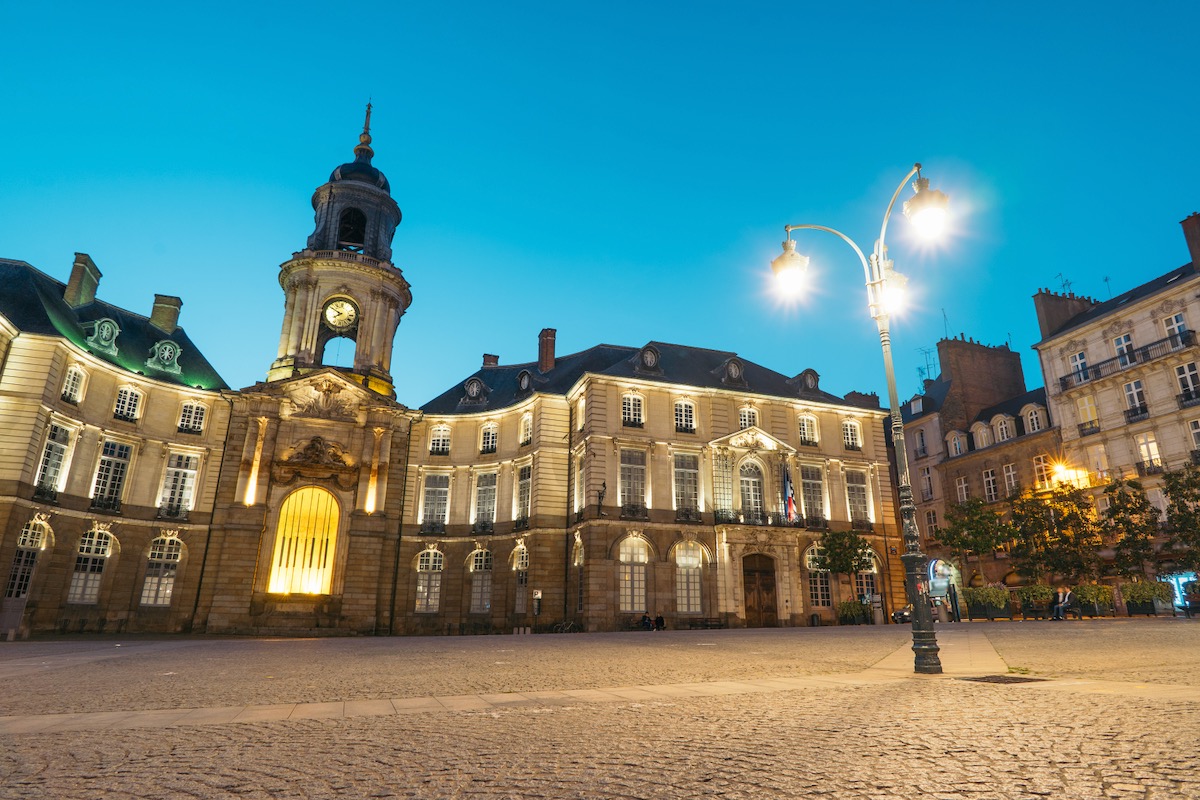The history of the main places in Rennes

Rennes, capital of Brittany, has several historic squares which play a central role in the history and social life of the city. Here is a historical summary of the main squares of Rennes:
- Place des Lices : in the Middle Ages, the Place des Lices took its name from the “lists”, the palisades surrounding the grounds for chivalric tournaments which took place there. It was the place of jousting and medieval festivities. From the 13th century, the square was at the heart of Rennes' social and military activities. Over time, the square became a very important market, attracting merchants from all over the region, offering local products, textiles and various other goods. Today, every Saturday morning, it hosts the second largest market in France, renowned for its fresh and local products. The square has seen several renovations and transformations over the centuries. Despite these changes, continued efforts are made to preserve its historic character and cultural significance.
- Place Sainte-Anne : it is located in the historic district of Rennes, in the heart of the old town. It owes its name to the old Sainte-Anne church, destroyed during the Revolution. Surrounded by half-timbered houses, this square has retained its medieval charm. It is a popular meeting place with its cafes, restaurants and cultural events. The presence of the university nearby also helped make the square a place frequented by students and intellectuals. Place Sainte-Anne has also been the scene of significant historical events. During the French Revolution, the Sainte-Anne church was transformed into a temple of Reason and a temple of the Supreme Being, reflecting the political and religious changes of the time. The architecture of the square mixes different styles with buildings dating from different historical periods. There are examples of medieval, classical and contemporary architecture.
- Town Hall Square : it has its origins in the Middle Ages, when Rennes was a fortified city with an important administrative center. The Town Hall itself has undergone several transformations over the centuries, notably after the fire of 1720 which ravaged a large part of the town, the Place de la Mairie is now the result of the plans of the architect Jacques Gabriel. During the French Revolution, Hôtel de Ville served as the seat of local revolutionary government and witnessed various political and social changes. The square has been the setting for popular rallies, military parades and rights demonstrations. The square is home to the Town Hall, a remarkable building with its clock tower, as well as the Rennes Opera. The square is an example of classical French architecture. Today it is a lively place where public events, concerts and celebrations take place.
- Brittany Parliament Square : this square is dominated by the Palace of the Parliament of Brittany, a masterpiece of classical 17th century architecture, designed by Salomon Brosse, famous for having also designed the Palais du Luxembourg in Paris. In 1994, a devastating fire partially destroyed the Palace of Parliament, a real shock for the city of Rennes, which sparked national mobilization for its restoration. Its reconstruction was carefully studied in order to preserve its original architecture as much as possible. The square is a symbol of justice and the legal history of the region, as well as a gathering place for cultural and political events. The square and its surroundings have been redeveloped over time to improve accessibility and tourist appeal while respecting its history and architecture.
By booking at the Hôtel des Lices, you will be able to access each of these places and their history in less than 10 minutes on foot.
